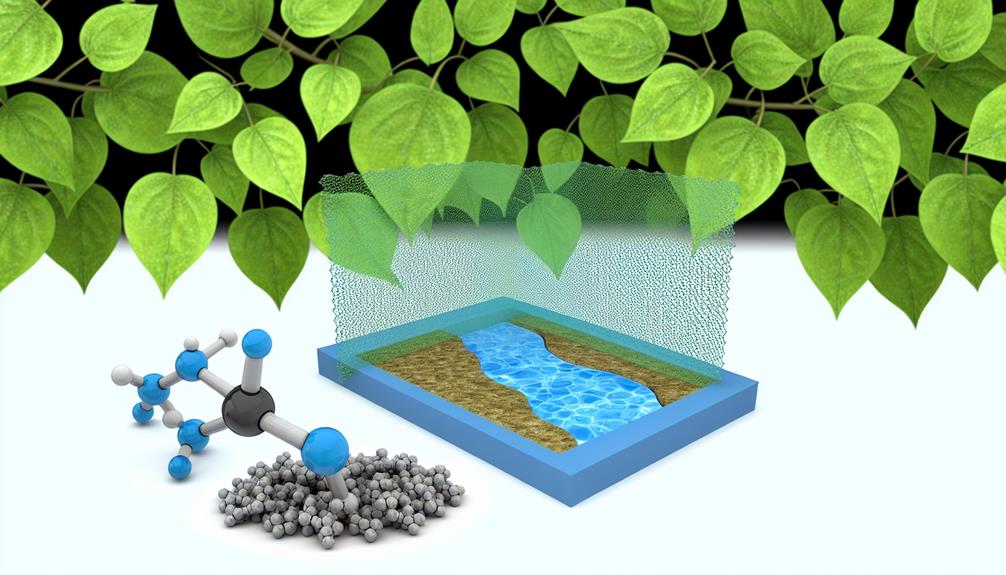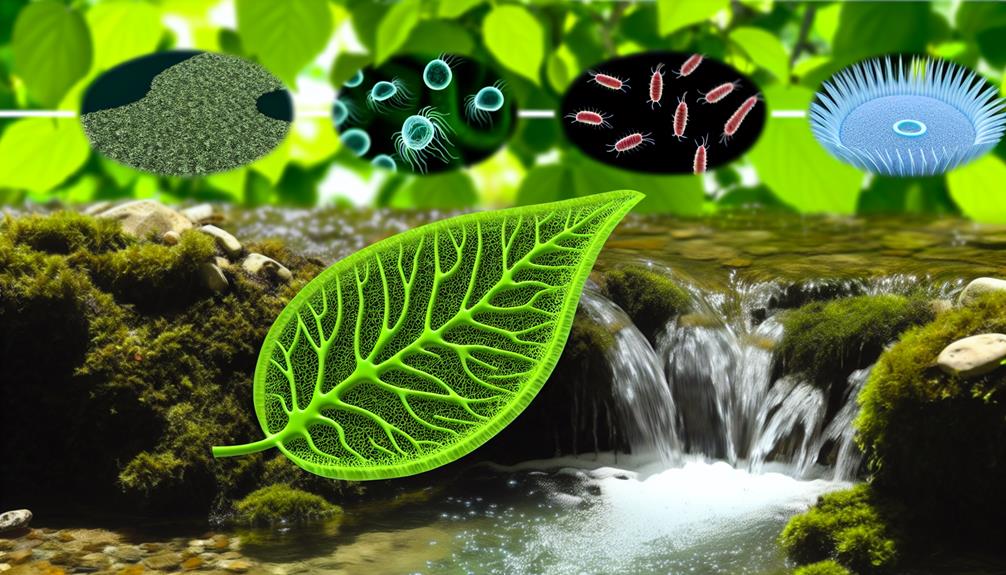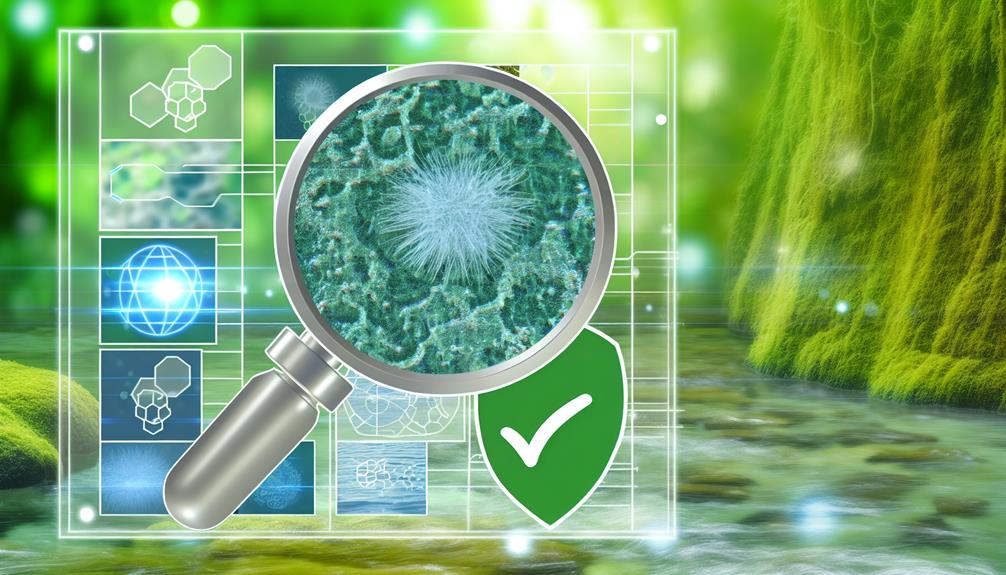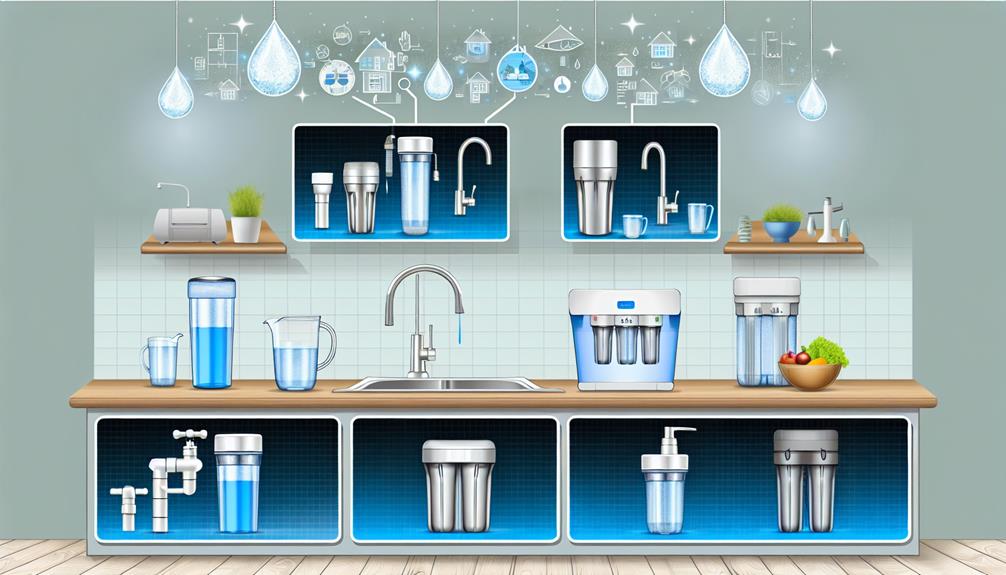As you navigate the sea of information on water purification, it's easy to drown in the myriad options and innovations that claim to quench the world's thirst for sustainable solutions. However, a handful of breakthroughs stand out for their ingenuity and potential impact on our planet's future.
You'll find that graphene-based filters are not just a pencil's companion anymore; they're on the front lines of removing contaminants with unparalleled efficiency.
Meanwhile, solar-powered desalination plants are turning the tide in areas where fresh water is as scarce as a desert mirage.
You're probably familiar with recycling, but have you ever considered the possibilities of biodegradable water purifiers?
These and other advancements, such as plant-based filtration systems and the microscopic marvels of nanotechnology, are reshaping the landscape of water treatment.
Let's wade through the details of these innovations, and you might just discover the sustainable keys to unlocking a future of clean, accessible water for all.
Graphene-Based Filters

Graphene-based filters represent a significant advancement in the quest for sustainable water purification due to their exceptional molecular sieving properties and chemical stability. The incorporation of graphene into filtration systems has markedly improved their efficiency and durability.
Graphene longevity is a pivotal aspect of this technology; the robust nature of graphene sheets ensures that filters have a prolonged lifecycle, thus reducing the frequency of replacements. This durability directly contributes to the cost efficiency of water purification processes, as the long-term operational expenses are significantly reduced.
The lattice structure of graphene, with its tight, one-atom-thick configuration, allows for the precise exclusion of contaminants while permitting water molecules to pass through unhindered. This specificity is critical in eliminating a wide range of pollutants, including organic molecules and metal ions, which are common in contaminated water sources.
Moreover, graphene's chemical stability means that it doesn't degrade easily in the harsh environments often encountered in water treatment facilities. Its resistance to corrosive substances and high temperatures makes it an ideal material for long-term use in various water purification contexts.
In terms of cost efficiency, the minimal maintenance required for graphene-based filters further reduces operational costs, solidifying their role as a cornerstone in sustainable water treatment solutions.
Solar-Powered Desalination
Turning now to solar-powered desalination, this innovative approach leverages renewable solar energy to separate salt and other minerals from seawater, providing a sustainable solution for addressing global freshwater scarcity. You'll find that the core of this technology is the conversion of solar energy into heat or electricity, which then powers the desalination process. This method not only aligns with environmental sustainability goals but also improves desalination efficiency by circumventing the need for fossil fuels.
Technically speaking, solar-powered desalination systems often utilize multi-stage flash distillation, reverse osmosis, or electrodialysis, each with varying degrees of energy requirements and output quality. The efficiency of these systems is dependent on the conversion efficiency of solar panels and the thermal or electrical efficiency of the desalination technology employed. Recent advancements have led to increases in overall system efficiency, reducing both the cost and environmental footprint.
The community impacts of solar-powered desalination are significant. By providing access to clean water in remote and arid regions, these systems can promote social and economic development. They're particularly crucial in areas where traditional grid infrastructure is nonexistent or unreliable. Moreover, the localized nature of solar energy reduces reliance on centralized water supply systems and enhances community resilience against climate change-induced water scarcity.
Biodegradable Water Purifiers

While solar-powered desalination harnesses renewable energy to tackle water scarcity, the emergence of biodegradable water purifiers marks a further step towards minimizing environmental impact in water filtration technology. These innovative systems utilize eco-friendly materials that, after their effective lifespan, can break down without leaving harmful residues in the environment. This represents a significant advancement from traditional water purification methods, which often rely on plastics and other non-degradable materials.
Biodegradable water purifiers work through natural purification processes. They might employ materials like bamboo, charcoal, or plant-based fibers, all known for their absorptive and filtering properties. These substances can remove contaminants from water, such as pathogens, heavy metals, and chemical pollutants, through processes like adsorption, where contaminants adhere to the surface of the filtering material.
The technical sophistication of biodegradable purifiers lies in their ability to match, and sometimes exceed, the efficiency of conventional filters while ensuring that end-of-life disposal contributes neither to pollution nor to landfill volume. You're looking at a game-changer in areas with limited waste management infrastructure, where reducing post-consumer waste is as critical as accessing clean water. Adopting these systems could significantly cut down on the environmental footprint of water purification efforts globally.
Plant-Based Filtration Systems
Plant-based filtration systems often leverage the innate purifying properties of certain vegetation to deliver clean water effectively and sustainably. These systems, designed around the concept of phytoremediation, utilize the natural processes of specific plants to remove contaminants from water. The efficiency of phytoremediation hinges on the types of plants selected and the pollutants targeted.
In an analytical view, you'll find that the root zone, in particular, plays a pivotal role in the purification process. It's here that a symbiotic relationship with microorganisms can break down organic pollutants, trapping and metabolizing them into less harmful compounds. Root zone purification is a critical component of these systems, as it dictates the overall efficiency of the filtration.
When assessing the technical aspects of plant-based filtration, one must consider factors such as hydraulic retention time, root biomass, and the variety of plant species used. The success of these systems is measured by their ability to reduce turbidity, nutrient load, and pathogen levels within the water. By optimizing these variables, plant-based filtration can achieve a high level of efficiency, rivaling that of conventional water treatment methods, while also providing a green solution that supports biodiversity and ecosystems.
Nanotechnology in Water Treatment

Building on the concept of natural purification, nanotechnology in water treatment introduces an advanced approach where tiny engineered particles target and neutralize contaminants at a molecular level. This method employs various nanoparticles and nano-composites that enhance both the efficacy and efficiency of water treatment processes. Here's how they contribute:
- Increased Membrane Longevity
- *Self-cleaning Surfaces:* Nanoparticles can be embedded into filtration membranes to create self-cleaning surfaces, reducing fouling and improving longevity.
- *Nanocomposite Membranes:* These membranes are less prone to degradation, maintaining filtration effectiveness over extended periods.
- Targeted Contaminant Removal
- *Heavy Metals:* Specific nanoparticles are designed to attract and immobilize heavy metal ions, preventing them from passing through water systems.
- *Organic Pollutants:* Nano-adsorbents can capture and break down complex organic molecules, rendering them harmless.
Additionally, the integration of antibacterial coatings on filtration systems helps mitigate the risk of microbial contamination. These coatings, often comprised of silver nanoparticles or titanium dioxide, present a hostile surface to bacteria, ensuring that water remains safe for consumption.
You'll find that these innovations not only advance the technical capabilities of water treatment but also align with sustainable practices by minimizing waste and energy consumption.
Conclusion
You've explored cutting-edge sustainable water filtration technologies that promise cleaner water with minimal environmental impact.
From graphene's exceptional molecular sieving to solar-powered desalination's energy efficiency, these advances are game-changers.
Biodegradable purifiers and plant-based systems offer natural, low-impact solutions, while nanotechnology pushes the boundaries of contaminant removal.
Collectively, these breakthroughs not only address global water scarcity but also set new standards for sustainability in water treatment practices.

